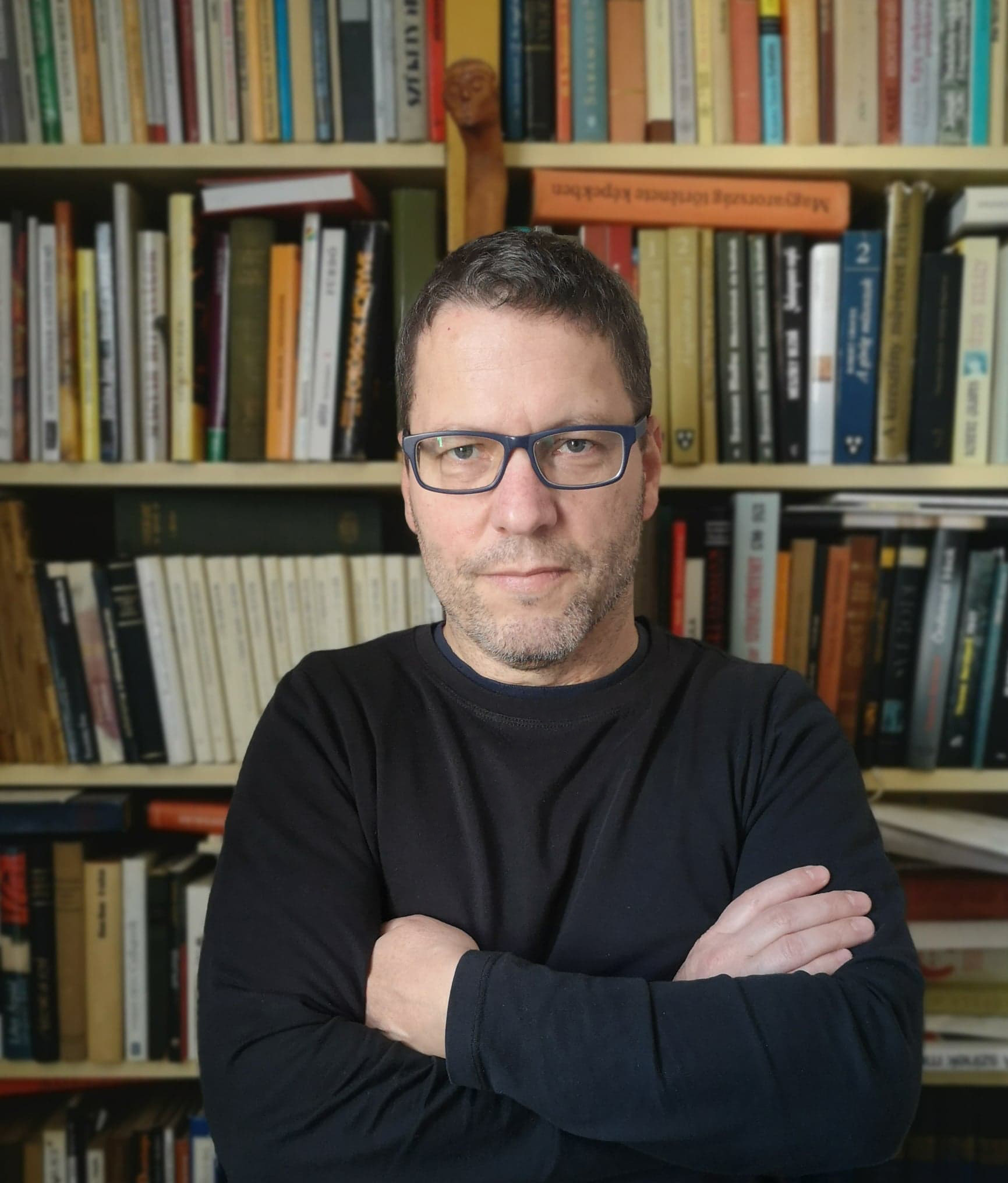Name
László Böröcz,
cultural organizer, Jewish cultural historian

László Böröcz (1965, Budapest) is a cultural organizer and Jewish cultural historian. He is one of the founders and leaders of Gallery 2B, founded in 2002, whose thematic exhibitions reflect diverse themes such as memory, the Holocaust, identity, minorities, and artist families in an unusual way. The gallery's website commented as, "The spiritual excitement we seek to maintain through our choice of themes can help us to experience Jewish identity in the freest possible way."
Completed projects:
Chances in Life (November 22, 2018 -January 4, 2019) Zsuzsi Flohr worked on her grandfather's labor history and post-war life with the help of family recollections, material and written documents. Curated by Márton Pacsika. Opening speach by aesthete Péter György. Guided tours led by historian Miklós Csapody and art historian Hedvig Turai.
Yiddish Cosmos (September 14, 2019 - October 9) Yevgeniy Fiks, a Russian-born New York artist elaborated on the relationship between Judaism and the cosmos through three themes. Volf and Aba Gordin were Yiddish native anarchists and created the artificial language of cosmic communication in 1927. The main works of Ari Sternfeld (1905-1980), a Polish-born Soviet scientist dealt with the calculation of the most efficient flight paths of spacecraft, also missed several space trips because of his Jewish origin. Event related to the exhibition: Cosmos Lauder Javne (October 3, 2019) What does Csillagváros have to do with Hamlet, or the Dane who wanted a golden nose, but it did not happen - Gábor Horányi, principal of the Lauder Javne School in Budapest, lectures on the history of science.
In progress:
WITNESSES The collection of the Hungarian Jewish Museum and Archives contains several works that perpetuate the everyday life of the concentration camps. Such as the series of Ágnes Lukács Auschwitz, the women's camp and Edit Bán Kiss series that portraying the women's camp in Ravensbrück. It is equally characteristic of the works that the inscriptions appearing on them are organically connected to the pictorial representations. Writing doesn’t just accompany the depicted theme: reading the image and text simultaneously encourages the viewer to interpret the often conflicting pictorial and written content on multiple planes. This kind of narrative is not only typical of the works of artists who experienced the Holocaust, such as the works of the Hungarian painter of Roma origin Omara (Oláh Mara). Textual narration is also an essential accessory and helper in his images. In the case of the autobiographically inspired works to be presented at the exhibition, the organic unity of image and writing results in a particularly personal narrative. The exhibition seeks to explore the common or different roots of the working methods of these creators. Curator: Zsófia Farkas